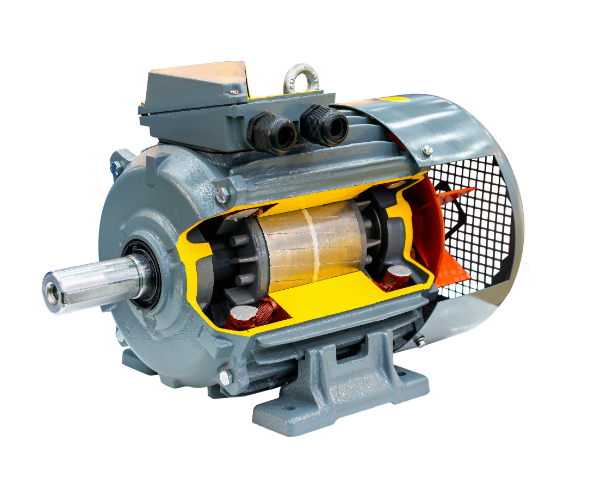Application of IE Series Three-Phase Motors in Mining Equipment
IE series three-phase motors are widely used for driving a big part of critical equipment for mining, including hoists, conveyor belts, ventilation fans, and pumps. Hoists in the mines may handle several thousands of tons of ore, so it needs a motor that can provide a stable driving force. IE series motors are especially noted by their high efficiency and low energy consumption; therefore, even under full load, they will provide the necessary power and will be working stably. Usually, the power requirements for the mining hoists are between 100kW and 500kW, and the IE series is capable of providing it due to their efficiency, exceeding 90%.
IE series three-phase motors are also suitable for conveyor belts used in the operation of mines. A conveyor belt is one of the main pieces of equipment used to transport materials within mines. The length of a single conveyor belt can be several hundred meters, so the motor needs to provide the required power at any point of the belt. IE series are used here thanks to their increased efficiency and ability to provide long-term continuous operation. Their starting torque is approximately twice as high as the speed-rated torque, so the conveyor belt starts quickly preventing material buildup.
Ventilation fans are used to provide fresh air supply for the underground operation of the mine and removal of dangerous gases. IE series three-phase motors are used to drive these large fans, and the power needed ranges between 200kW and 1000kW. As the level of the mine’s ventilation affects worker safety and the mine’s working environment, the IE series is chosen due to their low energy consumption and high reliability, thus, if maintained properly, they will be working non-stop and stably, which is vital for many mines.
Pumps are used in the mine to remove groundwaters safely, preventing flooding. IE series three-phase motors are used to drive high-lift, low-flow pumps. Usually, the power requirements for these pumps are between 50kW and 300kW. The pumps are used for very important purposes and have to be working reliably under all conditions. The IE series is highly efficient and durable; therefore, they can safely operate for long periods of time under the extreme conditions of operation, which guarantees the drainage of the mine and prevents production interruption.
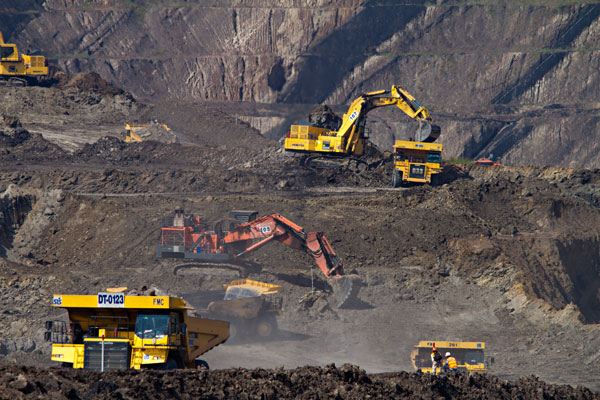
Application of Three-Phase Motors in Crushing and Grinding Equipment
IE series three-phase motors are used to drive crushing and grinding equipment, primarily crushers, and ball mills. Most important in terms of the selection of motors are crushers, which are employed to reduce large pieces of ore into smaller chunks that can be more easily handled. As the process requires a high level of torque and power, the crusher motors’ power is determined to be at 200kW or 1000kW at a minimum for the purposes of crushing slabs of iron ore or copper ore. Torque is a paramount requirement here, as the high level allows the crusher to start and operate even under the conditions of a heavy load, ensuring that the crushing process can begin without delay. The maximum power is crucial for obtaining the desired efficiency of the process—a crusher with a 200kW engine would have difficulties in using 450kW of power required for crushing iron ore effectively. Output with lower-power motors would also result in additional crushing, reducing eventual power efficiency.
In the case of grinding, the application of IE series three-phase motors is required for the operation of ball mills and providing rotation at a relatively constant speed to perform grinding. Here, the motors employed in ball mills should range from 500kW to 1500kW considering the work of the mill drum that is filled with ore and steel balls. IE motors are highly durable, allowing for 24/7 operational periods and high levels of efficiency for grinding, among other operations. Moreover, the industry of mining production is both highly consumptive and efficient, as extended periods of downtime are both troublesome and expensive. This makes the possible 10-year operational period an advantage, as well as the guarantee of at least 10,000 operational hours per year at a full capacity of the device. The damping method used for the device is also critical. Grinding mills are packed with ore and steel balls and can be difficult to rotate, a problem the damping method resolves. Without it, the mixture would not be milled properly.
Additional requirements are related to the conditions in which the motors are used—in mines, the temperature is high, and heavy vibration is present. As motors are subject to outgassing and breakdown, it is important to use IE motors specifically created to function in such an environment. Technologies are incorporated in the motors to ensure that they do not overheat. They are usually constructed from special materials and have a highly efficient, built-in cooling process which can ensure the motor’s function under extreme conditions. Such a result directly improves the efficiency of the process of crushing or grinding, leading to increased lostrock throughput and reduced energy requirements per ton of field-processed ore.
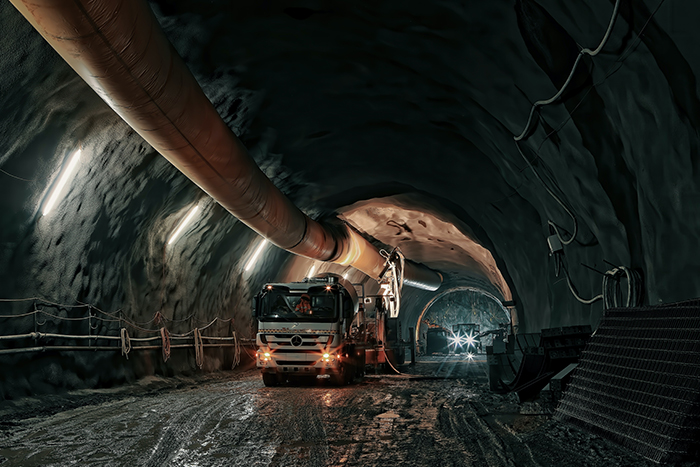
Application of Three-Phase Motors in Mining Ventilation and Drainage Systems
Another important application of these motors in mines is water pumps provided with drainage systems. They are essential for processing vast amounts of water, as mines frequently sink deep into the Earth, making them increasingly vulnerable to groundwater entering the mine. The power for pumps from 50 to 300kW is sufficient to pump water from underground in very large quantities. Their efficiency is critical to their design – even the briefest failure in the pumping cycle might allow the mine to flood, and proper drainage is crucial to ensure no damage is done to equipment. This includes ensuring these motors are rated for continuous operation. Filtering and removing water from mines is an essential procedure, and mineral extraction cannot be approved if even a small amount of water is allowed to enter. Similarly, the motors have to be designed to withstand the conditions of the mining industry, which frequently include high humidity, sometimes high temperatures, and significant dust levels. Their efficient cooling mechanisms separate them from uncorked devices, and the mechanical components are intended to last for many years without aging.
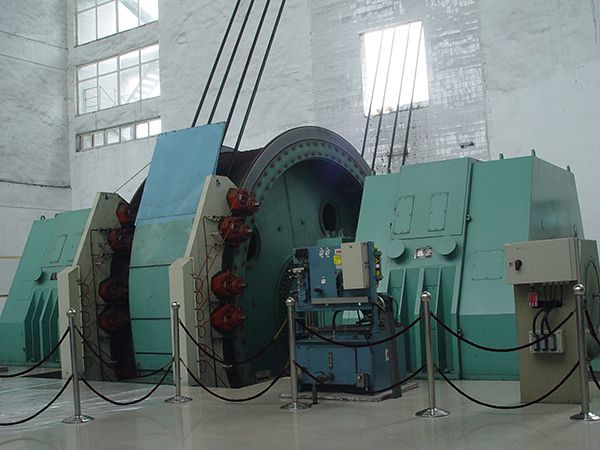
Application of Three-Phase Motors in Mining Hoisting Equipment
IE series three-phase motors are common in hoisting equipment such as mine car lifting system found in mining operations. These hammerhoist motors drive the hoists that move ore or any other material from deep underground to the surface. The motors range from 100kW to 500kW depending on the load and height being lifted. Since the process involves materials of different weights, the IE series motors accelerate with a smooth yet powerful torque, ensuring that weight is driven with ease. An equipment that stops in the middle while moving with too heavy a weight or jerks will be a high risk to mining operations. IE series motors are not only stable but strong enough to prevent either from occurring.
Further, deep mining of as much as a few hundred meters below the surface means that goods will have distance to cover. To achieve this, motors must be in a position to deliver power at all times, without heating up and losing torque. IE series three-phase hammers are made with advanced cooling systems and tough alloy case, meaning they perform as the first time always. The stability, precision, and efficiency by these motors reduces cost of operations for mines as energy consumption can be reduced to as little as 90%. An area where hoists from IE3-IEM/DTE are extremely useful is in speed control. The speed of these hammers can be controlled ensuring the device moves at the rate that is most comfortable to the mines. This is particularly important for mining operations where hoists are moving at very high speeds. Such movements are likely to inconvenience the structural integrity of the surface hoists are placed on, the swinging of the load can also result in injury or damage of the hoist.
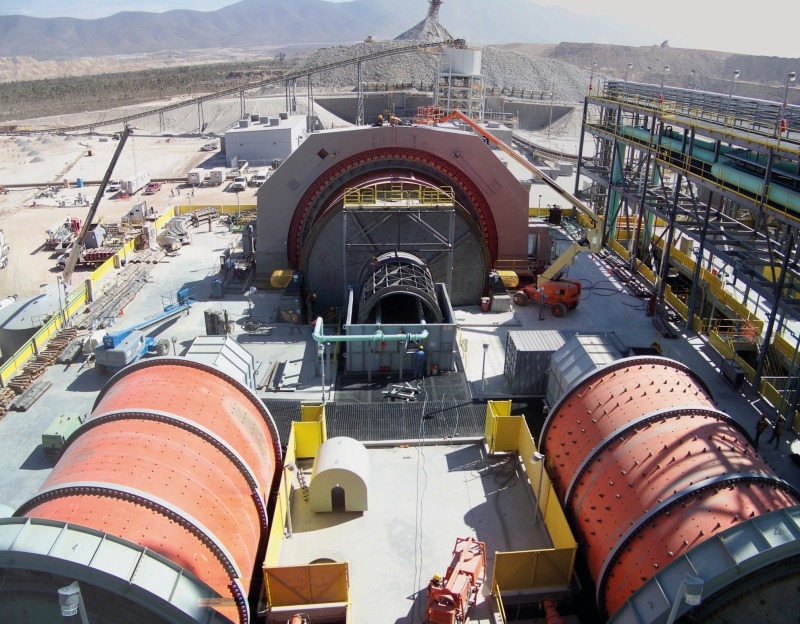
Energy Saving and Consumption Reduction in Mining with Three-Phase Motors
The trio of IE series three-phase motors, but predominantly those with the highest levels of efficiency, including IE3 and IE4, are pivotal in cost-effectively reducing energy consumption in mining. These motors are designed to work at efficiency levels that exceed 90%, meaning that they require less energy when powering mining equipment and machinery alike. For instance, IE4 motors are sufficient to reduce energy consumption by at least 15% in mining contexts where motors are run continuously. This decrease in energy consumption directly leads to lower operational costs, which is a notable concern in any mining practice. This industry is extremely expensive because of requiring continuous power supply and thus having to pay energy bills constituting a sizeable proportion of their spending. These motors are employed heavily in various forms of mining equipment, including the conveyor systems, pumps, and ventilation fans, in multiple contexts. Overall, installing IE3 or more predominantly, IE4 motors, mining joins hundreds of other solutions focussed on decreasing energy consumption by over 1,000 kilowatt-hours per annum.
As an example, a mine where one day sees the consumption of 10,000 kWh may reasonably be expected to consume 1,500 kWh less by the end of that day should the IE4 motors be installed. These savings add up, leading to heavier investment returns, as these motors are developed with long-term reliability and minimal maintenance requirements in mind. The yearly effect on a company’s spending in accepting these motors is a big boon to the bottom line, but, all the while, the reduced energy consumption is clearly also beneficial to the environment. Ways in which mining is conducted are subject to harder and harder regulations that companies have to navigate if they wish to continue to run their businesses. The use of these motors supports any mining organisation in satisfying their environmental requirements in all jurisdictions.






